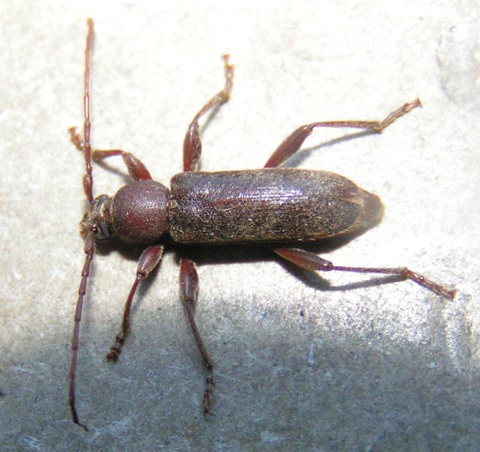Quick facts
Velvet longhorned beetle is an invasive species.
- Velvet longhorned beetles prefer apple and mulberry, but can also infest maple and peach trees.
- Signs of damage include yellowing or thinning of the canopy, larval tunneling and adult beetle exit holes.
The Minnesota Department of Agriculture monitors this invasive species. Please report any velvet longhorned beetle you spot at Report a Pest.
How to identify velvet longhorned beetles
- Velvet longhorned beetles (Trichoferus campestris) are 1/2–3/4 inches long and dark brownish orange in color.
- Legs and antenna are lighter in color than their body.
- Irregularly placed hairs can be seen on the wing covers of adult beetles.
- They can be difficult to identify due to the multitude of species lookalikes.
Life cycle
- Longhorned larvae overwinter in wood and pupate in the spring.
- Adults emerge from wood from June to August and are nocturnal.
Reviewed in 2019


